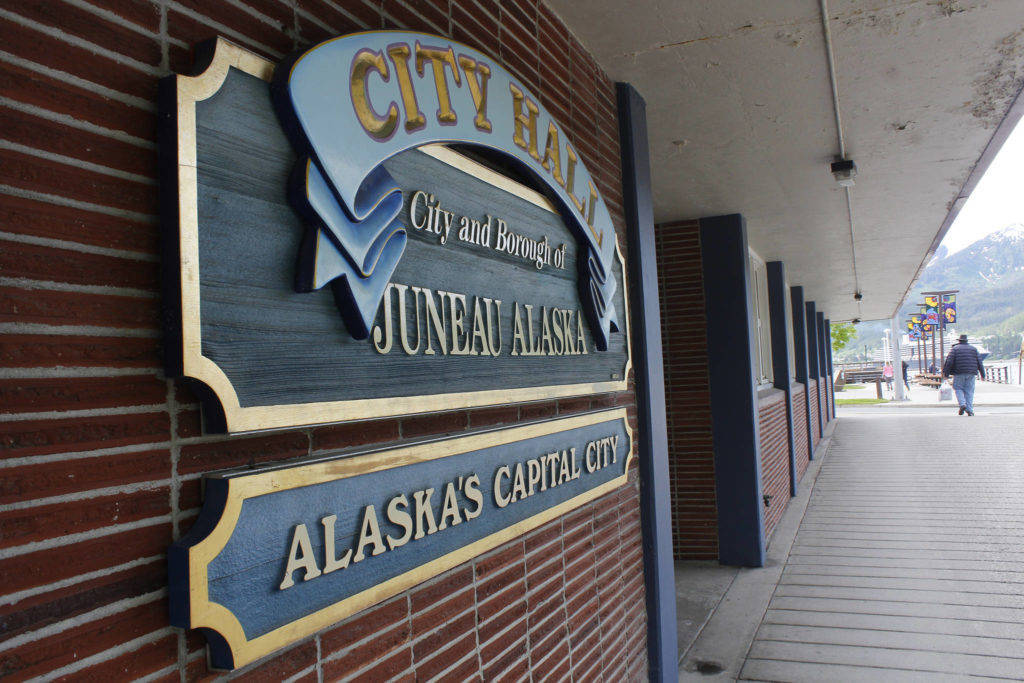Meeting summary: Sealaska Heritage Institute requests $1.5 million over two years to support the construction of a downtown arts campus. City and Borough of Juneau is progressing toward a prohibition on scooters and electric bikes in certain areas of downtown. The city may adopt a new Historic and Cultural Preservation plan.
7:40 p.m.
Maclean said if the plan is adopted, it does not come with design regulations.
“I just want to make that point very clear,” she said.
Gladziszewski asked whether there were any questions.
Hale moved that the plan be adopted by ordinance to replace the 1981 plan.
It’s been sent to the Assembly.
Weldon thanked Maclean, the staff and research committee that helped with the plan.
“It’s time to make an updated one,” Gladziszewski said.
Zane Jones, chair of the Historic Resources Advisory Committee, identified one of the defining characteristics of the new plan compared to the previous one from 1981.
“It adds the words cultural preservation, which is quite a big move,” Jones said.
He said that emphasis on culture, including indigenous cultures, is a significant departure from the previous plan.
7:30 p.m.
Maclean said she would say Juneau tends to be reactive with its preservation plan.
“It was very much a downtown focus with it and leaving out the vast majority of Juneau’s history and cultures,” Maclean said.
She said the proposed plan does comply with the comprehensive plan.
She said it also promotes preservation of Juneau’s heritage — beyond the Gold Rush days.
Edwardson interjected to ask if the plan applies to more than just buildings.
Maclean said yes.
Buildings, sites, cemeteries and other locations are part of the plan.
7:20 p.m.
The meeting is back to order and Jill Maclean, CBJ’s Community Development Director, is giving a presentation about the historic and cultural preservation planning.
Maclean said clearly articulated goals and an adopted plan will make CBJ more attractive to granted agencies.
She said there is a 39-year-old plan that was adopted, but it’s “quite limiting” when the city applies for grants.
“Historic preservation increases property values, and it brings in greater tax revenues,” Maclean said.
7:10 p.m.
Maria Gladziszewski said she supports moving the ordinance forward since it fixes a problem, and it can be added to later. The motion carries. A short break has been called.
7:05 p.m.
Assembly member Rob Edwardson made a motion to define “micromobility devices” in an ordinance that prohibit such devices in certain areas as scooters.
Mayor Beth Weldon said she disagreed with the change because rental bikes and segways are causing problems in other places.
Hale reminded the Assembly the proposed prohibition ordinance was replacing a blanket prohibition of such devices, which was passed last year.
The ordinance states the prohibition area would apply to Jacobsen Drive from the AJ Dock to Mount Roberts Street, Mount Roberts Street from Jacobsen Drive to Thane Road, Thane Road at Mount Roberts Street through Franklin Street to Fifth Street; Fifth Street from Franklin Street to Main Street; Main Street from Fifth Street to Egan Drive; and Egan Drive from Main Street to 10th Street.
A person violating the ordinance would face a $100 fine the first time and a $300 fine the second time.
The third offense and any subsequent offense would result in a maximum fine of $500.
Assembly member Loren Jones said he things the ordinance is “OK” for continuing a moratorium on scooters downtown, but it opens the city up to problems in other areas.
6:40 p.m.
Worl said the $1.5 million could make its way to the project in whatever installments the Assembly approved.
“However the city can work it out,” Worl said.
The total cost of the project is anticipated to be $12.75 million, according to Worl’s presentation. A $5.6 million federal grant along with donations, land commitment and other grants accounts from the rest of the known funding.
6:28 p.m.
Worl said SHI is requesting $1.5 million from the city to support the project, which is about 80% funded.
Assembly member Michelle Bonnet Hale asked how quickly funding would be desired.
“We would be most pleased if we could get partial this year and partial next year,” Worl said.
Assembly Wade Bryson asked if the arts campus would be exempt from property taxes.
City attorney Robert Palmer said he will look into it.
He also asked what SHI would do to keep homeless people from camping out under the proposed campus’ covered walkways.
Worl said the placement of security guards is being considered.
The matter is being forwarded to the finance committee and will be considered.
6:18 p.m.
While the proposed campus would take up Sealaska’s current parking lot, Worl said there is an underground parking lot planned for the campus that will result in a net increase in parking spots.
6:15 p.m.
Worl is leading the presentation.
She said one of the goals of the arts campus would be to establish Juneau as the Northwest Coast arts capital of the world.
“Juneau is poised to become a model for cultural heritage tourism, one of the fastest-growing sectors of the travel industry,” Worl said.
This is not the first time Worl has envisioned that title for the capital city.
“It will also create 2- and 4-year certificates in Northwest Coast art,” Worl said of the proposed campus. She said that would be done through partnership with the University of Alaska Southeast and the Institute of Aerican Indian Arts.
[New arts campus could break ground this year]
6 p.m.
The City and Borough of Juneau Assembly Committee of the Whole will get started with a presentation about Sealaska Heritage Institute’s proposed arts campus.
SHI President Rosita Worl is in the audience.
Also on the agenda is an ordinance related to scooter rentals, a presentation about CBJ’s historic and cultural preservation plan and a Franklin Dock lease request and Seawalk update.

